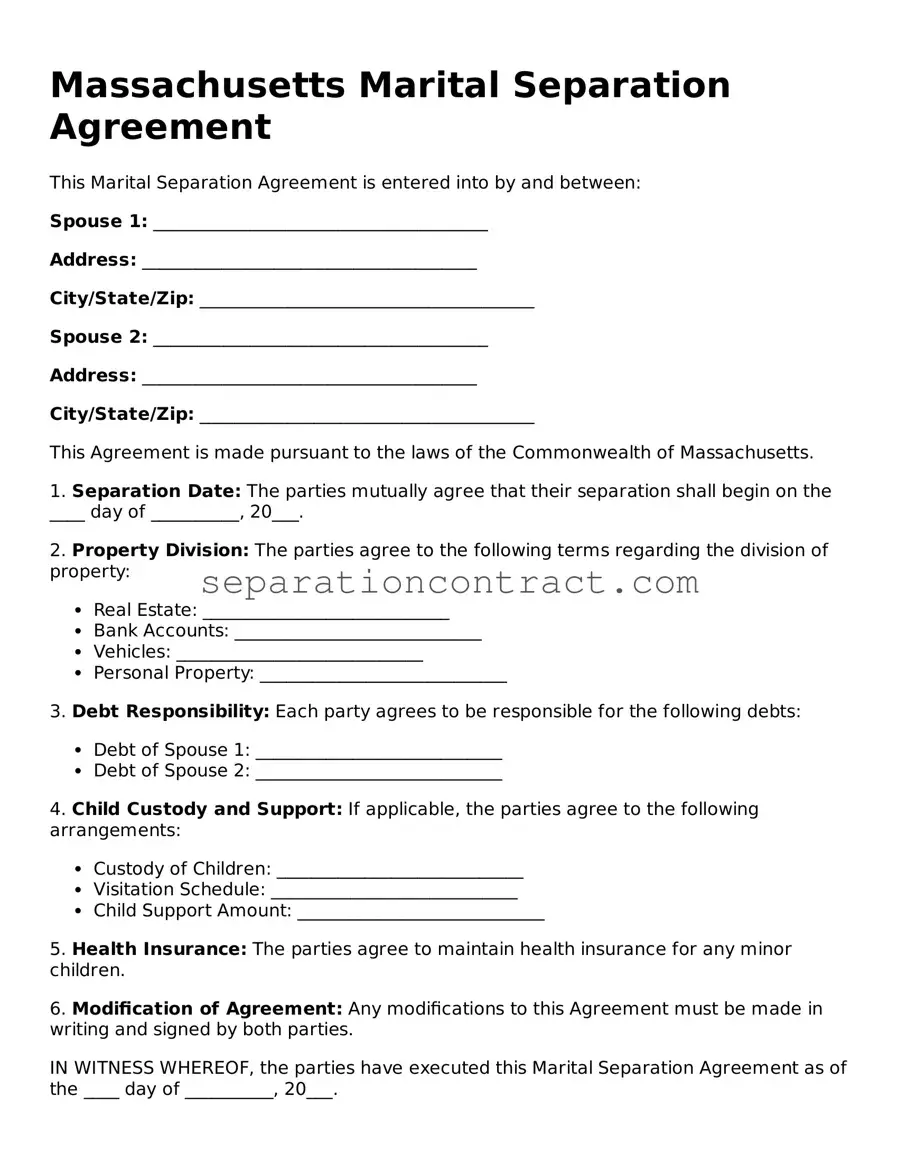Filling out the Massachusetts Marital Separation Agreement form can be a complex process. Many individuals make mistakes that can lead to complications later. Here are ten common errors to avoid.
First, people often forget to include all necessary personal information. This includes full names, addresses, and contact details for both parties. Missing this information can cause delays in processing the agreement.
Another frequent mistake is not clearly outlining the terms of asset division. It’s crucial to specify which assets belong to whom. Vague language can lead to misunderstandings and disputes down the line.
Many individuals also neglect to address debts. It’s important to list any shared debts and specify who is responsible for paying them. Failing to do so can create financial problems in the future.
Inadequate attention to child custody arrangements is another common error. Parents should clearly define custody, visitation schedules, and decision-making authority. Ambiguity in these areas can lead to conflicts and confusion.
Some people overlook the importance of including support payments. Whether it’s child support or spousal support, detailing the amount and payment schedule is essential. This ensures both parties understand their financial obligations.
Additionally, individuals sometimes forget to date the agreement. A missing date can lead to questions about when the terms take effect, which can complicate enforcement.
Another mistake is failing to have the agreement notarized. Notarization adds an extra layer of authenticity and can help prevent disputes about the validity of the document.
People may also rush through the review process. It’s vital to carefully read through the entire agreement before submitting it. Overlooking even a small detail can have significant repercussions.
Some individuals mistakenly believe they can make changes after submission. Once the agreement is filed, amending it can be a lengthy and complicated process. Ensure everything is correct before finalizing.
Lastly, individuals sometimes neglect to seek legal advice. Consulting with a lawyer can provide clarity and help avoid potential pitfalls. Legal guidance can be invaluable in navigating the complexities of marital separation.
